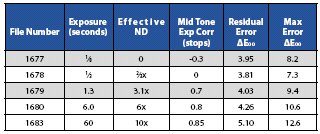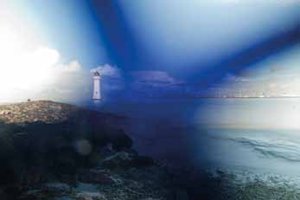articles/Cameras/srb-page2
SRB Photographic - Variable ND Filter - part 2 of 1 2 3 4
by Mike McNamee Published 01/12/2012

The variable ND works by crossing polarisers relative to each other on the way to the extinction point, at which a theoretically perfect pair of polarisers would extinguish all light transmission. This brings the great advantage of flexibility; a single filter can perform the task of about four single density filters and all stages in between also.
There is a downside, there is a tendency to bring colour shifts into the image and under certain conditions there is a defect known as a Maltese Cross, a polarisation interference effect which produces an ugly darkening in the shape of a Maltese Cross from corner to corner of the image.

On Test
We used a GretagMacbeth CC24 Target so as to provide a wider range of colour testing and also to enable us to quantify any colour shifts. It should be said that although the colour shifts can be dramatically large (and certainly unacceptable) they may be relatively easily dealt with using the standard tools in Adobe Raw converter (ACR).
We used the Rags Gardner routine to assess the residual error after the Raw file had been adjusted for colour balance and mid-tone density.
This is a valid way to bring a test target closer to optimum because it is only what we would do with any studio shot. With care, the same kind of corrections may be applied to a landscape shot.
Please Note:
There is more than one page for this Article.
You are currently on page 2
- SRB Photographic - Variable ND Filter page 1
- SRB Photographic - Variable ND Filter page 2
- SRB Photographic - Variable ND Filter page 3
- SRB Photographic - Variable ND Filter page 4
1st Published 01/12/2012
last update 21/07/2022 08:46:26
More Cameras Articles
There are 26 days to get ready for The Society of Photographers Convention and Trade Show at The Novotel London West, Hammersmith ...
which starts on Wednesday 14th January 2026










